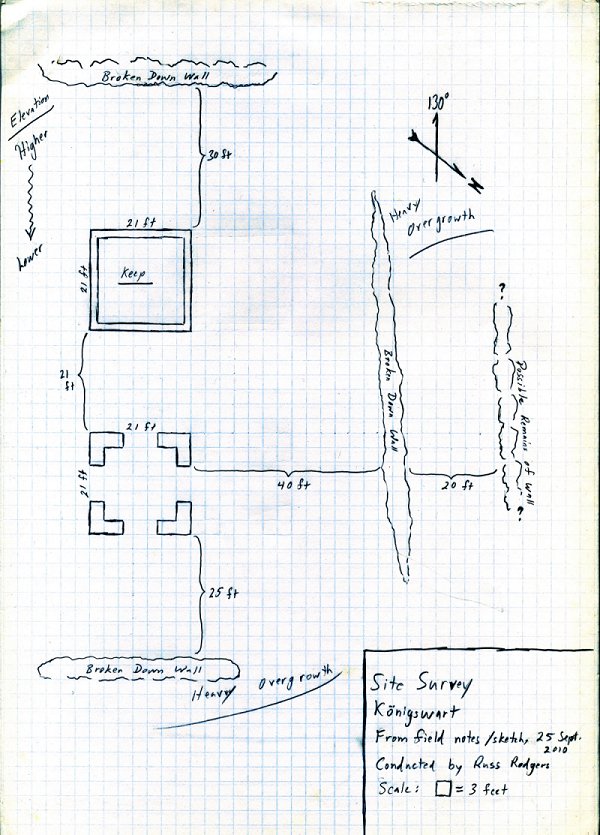Konigswart
There is very little data on Konigswart, a hunting castle lost in the deep forest of the Schwarzwald literally for centuries. It was known to researchers in the mid-1900s, but they did not know its location and it was only recently that it was discovered.
The castle was built in 1209, and was a favorite lodging for Pfalzgraf Rudolf von Tubingen. It was not very large, essentially designed to protect the Pfalzgraf and his hunting party when they traveled to the region in search of plentiful game. It was lost to history for close to 800 years until the remains were discovered in 1974.

I do not know if anyone has done a serious site survey of the location (I assume somebody has), but to the left is a diagram created from my field notes and sketches (done in a steady rain). To my knowledge it's the first of its kind to be published (as of 2013). Significant undergrowth and lack of time meant that I couldn't search for additional sections of walls that may have been to the southeast of the site. The castle was built on a gentle slope and had at least one, if not two, ring walls about it. Thus despite its smaller size, it appears to have still had an outer and inner ward, or bailey, plus at least one keep and another building the same size as the keep for living quarters.
Due to its remote location it is very possible that the castle was not occupied during most of the year. If so, an advanced party would have gone to the site to prepare it (and ensure it was safe) prior to the arrival of the noble hunting party. If it was occupied year round, the garrison couldn't have been more than one or two dozen personnel. Being stationed at such a site would have been very unpopular with soldiers chosen for the task, so these would have been rotated regularly. If it was not occupied, secuirty would have been predicated mostly upon its remote location, thus making it essentially a secret hideout. And indeed it appears to have been so, for once Rudolf died it seems that the site was forgotten quickly to vanish into the murkiness of time.
My site survey was conducted with a combination of foot pacing (for the outer sections) and the use of a Leica laser for the significant remnants. Above, I'm leaning on the remains of the living quarters, the section downslope and northeast of the keep.